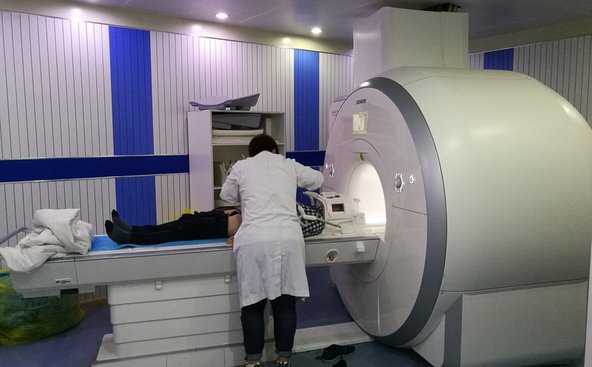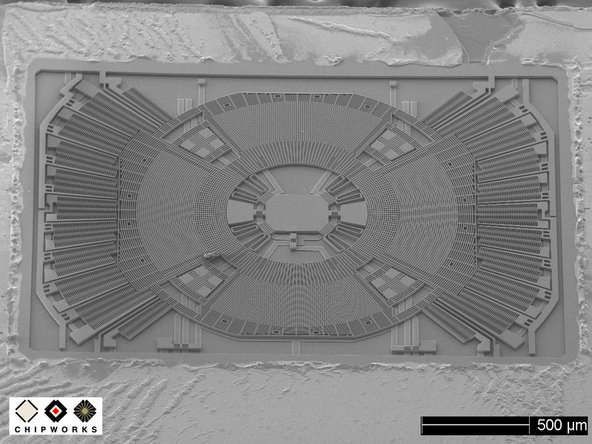This is the kind of tale that you don’t hear every day. Erik Wooldridge is a Systems Specialist at Morris Hospital near Chicago. During the installation of a new GE Healthcare MRI machine, he started getting calls that cell phones weren’t working. Then, some Apple Watches started glitching.
“My immediate thought was that the MRI must have emitted some sort of EMP, in which case we could be in a lot of trouble.” But an electromagnetic pulse would have taken out medical equipment in the facility as well, and they were working fine! He started investigating, and learned that every single impacted device was made by Apple—the technician’s Android phones were fine. And it was a wide-sweeping issue, impacting 40 different devices. What the heck?
I’ve seen a lot of strange glitches in my time, and I’ve never heard of something like this. Neither had Erik. “The behavior of the devices was pretty odd. Most of them were completely dead. I plugged them in to the wall and had no indication that the device was charging. The other devices that were powering on seemed to have issues with the cellular radio. The wifi connection was consistent and fast, but cellular was very hit or miss.”
That’s when he posted the issue to Reddit, where other sysadmins speculated that it might be caused by the liquid helium used to cool the MRI machine. So he investigated, and found there was a helium leak at the same time that vented into the building.

“I discovered that the helium leakage occurred while the new magnet was being ramped [down to cool it]. Approximately 120 liters of liquid [helium] were vented over the course of 5 hours. There was a vent in place that was functioning, but there must have been a leak. The MRI room is not on an isolated HVAC loop, so it shares air with most or all of the facility. We do not know how much of the 120 liters ended up going outdoors and how much ended up inside. Helium expands about 750 times when it expands from a liquid to a gas, so that’s a lot of helium (90,000 L of gaseous He).” I bet the nurse’s voices were higher pitched that day!
The devices started to slowly recover after the initial incident, but not completely. “We did have a few abnormal devices. One iPhone had severe service issues after the incident, and some of the [Apple Watches] remained on, but the touch screens weren’t working (even after several days.)”
He performed some triage, categorizing devices by type. “Models of iPhones and Apple Watches afflicted were iPhone 6 and higher, and Apple Watch Series 0 and higher. There was only one iPhone 5 in the building that we know of and it was not impacted in any way. The question at the time was: What occurred that would only cause Apple devices to stop working?”
This piqued my interest, and I reached out to some friends that make ‘MEMS’ silicon. These microelectromechanical systems are some of the smallest mechanical apparatuses in the world. Every phone has gyroscopes and accelerometers with micrometer-thin elements. My initial theory, shared by some on Reddit, was that the helium molecules were small enough to get inside these vacuum-sealed chips and interfere with the mechanical workings.
But there are two problems with this idea: One, Apple isn’t alone in using MEMS gyroscopes—every phone has them. Why weren’t the Android phones affected? Perhaps there’s a bug in iOS that causes crashes when it gets faulty data from the gyro? But the bug impacted Apple Watches, too—and they run WatchOS. Additionally, iPhones earlier than the 6 weren’t affected. It seems unlikely that this was a new software bug that impacted both iOS and WatchOS.

So what else could it be? Well, at the heart of every electronic device is a clock. Traditionally, these are quartz oscillators, crystals that vibrate at a specific predictable frequency—generally 32 kHz. When they were first invented, they enabled the first digital ‘quartz’ watches. Now, these frequency generators are at the heart of every electronic device.
Without a clock, the system stands still. The CPU flat out doesn’t work. The clock is literally the heartbeat of a modern device.
But quartz oscillators have some problems. They don’t keep time as well at high (and low) temperatures, and they’re a relatively large component—1×3 mm or so. In their quest for smaller and smaller hardware, Apple has recently started using MEMS timing oscillators from a specialized company called SiTime to replace quartz components.

Specifically, they’re using the SiT512, ‘the world’s smallest, lowest power 32 kHz oscillator.’ And if the MEMS device was susceptible to helium intrusion, that could be our culprit!
A failing oscillator would match Erik’s symptoms, which he reproduced in an experiment. “I placed an iPhone 8 Plus in a sealed bag and filled it with helium. This wasn’t incredibly realistic, as the original iPhones would have been exposed to a much lower concentration, but it still supports the idea that helium can disable the device. In the video I leave the display on and running a stopwatch for the duration of the test. Around 8 minutes and 20 seconds in the phone locks up. Nothing crazy really happens. The clock just stops, and nothing else. The display did stay on though.”
I was able to repeat his experiment in our lab. My iPhone 8 lasted about four minutes in a helium atmosphere before it shut off entirely.
Sure enough, Apple’s user guide for the iPhone and Apple watch admits this is a problem:
“Exposing iPhone to environments having high concentrations of industrial chemicals, including near evaporating liquified gasses such as helium, may damage or impair iPhone functionality. … If your device has been affected and shows signs of not powering on, the device can typically be recovered. Leave the unit unconnected from a charging cable and let it air out for approximately one week. The helium must fully dissipate from the device, and the device battery should fully discharge in the process. After a week, plug your device directly into a power adapter and let it charge for up to one hour. Then the device can be turned on again.” (Emphasis added.)
Hydrogen and helium are notoriously hard to contain because their molecules are so small. It sounds like this is a problem that SiTime has been working to solve for a while. I found this on their FAQ, “How effective is the hermetic seal of MEMS oscillators?”
“Previous generations of EpiSeal resonators may have been impacted by large concentrations of small-molecule gas. Newer EpiSeal resonators are impervious to all small-molecule gases. Please contact SiTime in case you are planning to use a SiTime device in large concentrations of small-molecule gas, so that we can recommend an appropriate, immune part.” (Emphasis added again.)
I was curious if this would impact other kinds of MEMS devices, so I reached out to InvenSense Motion, the company who makes the image stabilizing chip in the Pixel 3. David Almoslino, their Senior Director of Corporate Marketing, confirmed that it was an issue. He told me that their products “can be somewhat susceptible to helium. Helium can diffuse through the fusion bond oxide and cause the cavity pressure to increase. In our pressure sensors, helium could cause the absolute accuracy to temporarily degrade. In our gyro sensors, helium could cause the offset to drift and could cause the oscillation to temporarily stop. In any [accelerometer] sensors, helium should have very little impact. All our InvenSense parts should recover once removed from any helium environment.”
Of course, the reason that you’ve never heard of this before is because it’s such a rare situation. But silicon manufacturers are aware of it and do what they can to minimize the problem. David told me that “A helium leak test is a pretty standard MEMS test done by most companies to assess vacuum packages.”
So that’s it! Like an incredibly tiny grain of sand, the helium molecules are small enough to get inside the device, physically stop the clock, and turn your phone temporarily into a paperweight.




4 Comments
Hi, this happens to me a lot being an MRI tech and iPhone 8 user. But can you test if it also happens to the new iPhone 12?
Alexander Akselsen - Reply
Thank you for your thorough investigation, the helium exposure of my iPhone X happened to me two days ago in MRI, and I am exchanging it to iPhone 12 in a hope that the newer model will be more resilient to helium. Do you have any information pertaining to iPhone 12 resistance to helium exposure?
Nathan A. - Reply
Also happened during an MRI installation at a veterinary hospital here in Jupiter Florida.
Gankatron 5000 - Reply
I would like to know if the phones ever recovered.
Mark Hodges - Reply